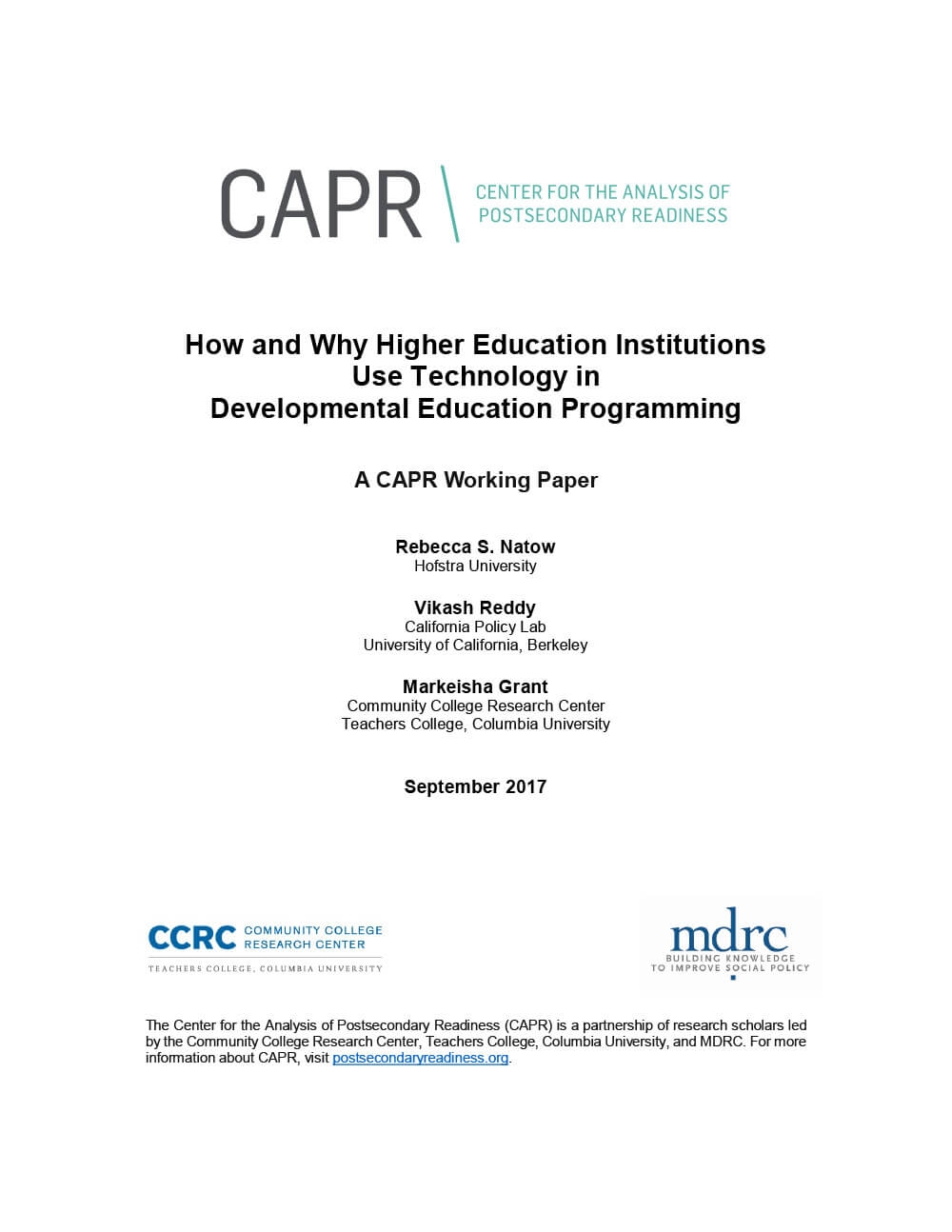
As postsecondary institutions increasingly integrate technology into developmental education, it becomes important to understand how technology is used in these programs, what challenges institutions have encountered relating to the technology, and what considerations institutional leaders take into account when deciding whether and how to integrate technology in developmental education. This working paper from the Center for the Analysis of Postsecondary Readiness (CAPR) explores these questions, drawing from semi-structured interviews with key personnel from 31 open-access two-year public colleges, 11 broad-access four-year public colleges, and 41 state-level organizations overseeing such colleges.
The authors find that institutions are integrating a variety of instructional, course management, and student support technologies into developmental education. In doing so, institutions have encountered a number of challenges, particularly with regard to end-user difficulties with technology. Evidence of the effectiveness of technology for improving educational outcomes was considered by a number of organizations when making decisions about technology use in developmental education. However, other considerations—particularly those based on costs and resources—were also quite influential. Indeed, such economic considerations were described in interviews more often than evidence of effectiveness by respondents discussing reasons for using technology in developmental education.
A version of this paper will be published in the Community College Journal of Research and Practice under the title “Technology Use in Developmental Education: Experiences, Challenges, and Rationales.” The article is currently available online.
For more research from CAPR, visit postsecondaryreadiness.org.
